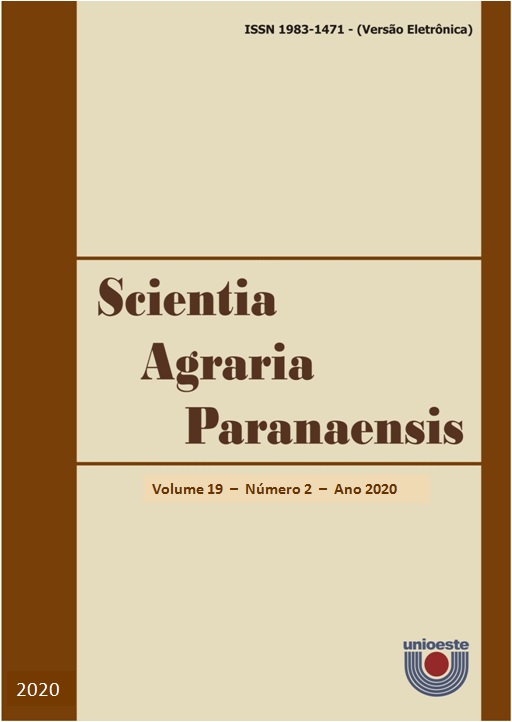Does split nitrogen application increase garlic yield and quality?
DOI:
https://doi.org/10.18188/sap.v19i2.23004
Agências de fomento
Resumo
Nitrogen (N) fertilization is essential for obtaining high garlic yields and satisfying commercial requirements for bulb diameter. However, excess nitrogen may favor the development of lateral shoots. This study aimed to examine the effect of different N application strategies on garlic yield and quality. The experiment was conducted in the field using garlic cv. Chonan and four N fertilization strategies (T1, N fertilizer applied at 15-day intervals; T2, N fertilizer applied before and after clove differentiation; T3, N fertilizer applied before clove differentiation; and T4, N fertilizer applied after clove differentiation). All treatments received the same N rate (210 kg ha-1). A single N application before clove differentiation (T3) favored lateral shoot growth, resulting in the highest incidence of this defect (11.66%). The other treatments did not differ in lateral shoot incidence. Four classes (3–6) of bulb diameter were observed, with treatments ranked in decreasing order as T2 > T1 > T3 > T4. There were no significant differences in garlic yield between single N application treatments (T3 and T4). However, garlic yield differed by 73% between T1 (13,329 kg ha-1) and T4 (7,679 kg ha-1), by 55.31% between T2 (11,927 kg ha-1) and T4, and by 36% between T1 and T3 (9,783 kg ha-1). These results indicate that two N fertilization strategies can be adopted in high-quality garlic production: fortnightly N fertilization or split N application before and after clove differentiation. A single N application is not recommended, regardless of application timing, as it promotes lateral shoot growth and reduces garlic quality and yield.Downloads
Publicado
16-07-2020
Como Citar
BESEN, M. R.; OGAWA, J. M.; RIBEIRO, R. H.; GUGINSKI-PIVA, C. A.; PIVA, J. T. Does split nitrogen application increase garlic yield and quality?. Scientia Agraria Paranaensis, [S. l.], v. 19, n. 2, p. 138–143, 2020. DOI: 10.18188/sap.v19i2.23004. Disponível em: https://e-revista.unioeste.br/index.php/scientiaagraria/article/view/23004. Acesso em: 13 dez. 2025.
Edição
Seção
Artigos Científicos
Licença
Aviso de Direito Autoral Creative Commons
Política para Periódicos de Acesso Livre
Autores que publicam nesta revista concordam com os seguintes termos:
1. Autores mantém os direitos autorais e concedem à revista o direito de primeira publicação, com o trabalho simultaneamente licenciado sob a Licença Creative Commons Attribution que permite o compartilhamento do trabalho com reconhecimento da autoria e publicação inicial nesta revista.2. Autores têm autorização para assumir contratos adicionais separadamente, para distribuição não-exclusiva da versão do trabalho publicada nesta revista (ex.: publicar em repositório institucional ou como capítulo de livro), com reconhecimento de autoria e publicação inicial nesta revista.
3. Autores têm permissão e são estimulados a publicar e distribuir seu trabalho online (ex.: em repositórios institucionais ou na sua página pessoal) a qualquer ponto antes ou durante o processo editorial, já que isso pode gerar alterações produtivas, bem como aumentar o impacto e a citação do trabalho publicado (Veja O Efeito do Acesso Livre).
Licença Creative Commons
Esta obra está licenciada com uma Licença Creative Commons Atribuição-NãoComercial-CompartilhaIgual 4.0 Internacional, o que permite compartilhar, copiar, distribuir, exibir, reproduzir, a totalidade ou partes desde que não tenha objetivo comercial e sejam citados os autores e a fonte.


